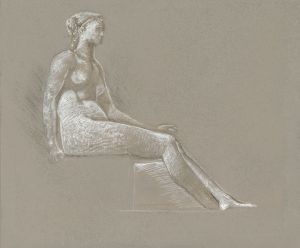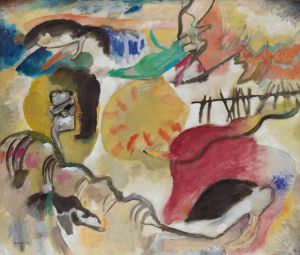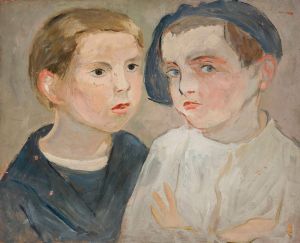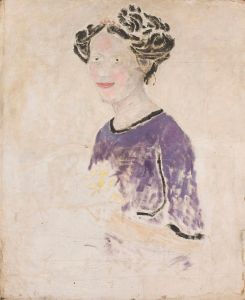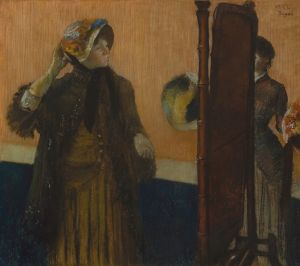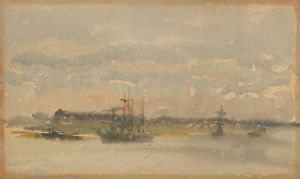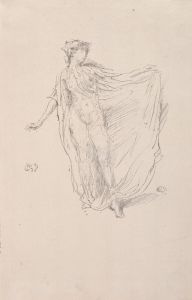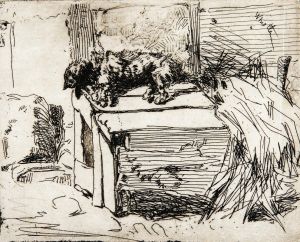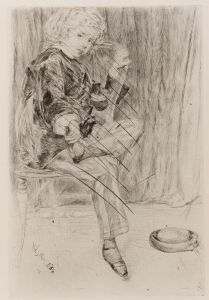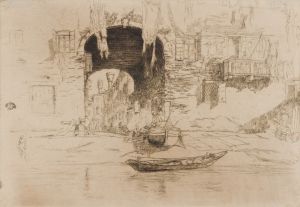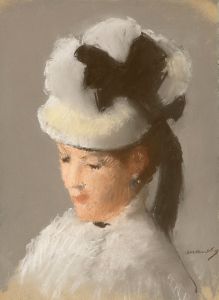
Fumette
A hand-painted replica of James Abbott McNeill Whistler’s masterpiece Fumette, meticulously crafted by professional artists to capture the true essence of the original. Each piece is created with museum-quality canvas and rare mineral pigments, carefully painted by experienced artists with delicate brushstrokes and rich, layered colors to perfectly recreate the texture of the original artwork. Unlike machine-printed reproductions, this hand-painted version brings the painting to life, infused with the artist’s emotions and skill in every stroke. Whether for personal collection or home decoration, it instantly elevates the artistic atmosphere of any space.
James Abbott McNeill Whistler was an American artist known for his significant contributions to the art world during the late 19th century. He is particularly recognized for his paintings, etchings, and lithographs, which often emphasized mood and atmosphere over detailed representation. One of his lesser-known works is "Fumette," a painting that reflects his interest in capturing the essence of his subjects through a harmonious blend of color and form.
"Fumette" is a portrait of a woman named Héloïse, who was known by the nickname Fumette. She was a French model and one of Whistler's early muses during his time in Paris. Whistler moved to Paris in the 1850s, where he immersed himself in the vibrant art scene and developed his distinctive style. Fumette, with her striking features and enigmatic presence, became a subject of fascination for Whistler, inspiring several works.
The painting "Fumette" is characterized by Whistler's signature style, which often involved a limited color palette and a focus on tonal harmony. This approach was influenced by his admiration for Japanese art, particularly the use of space and simplicity. In "Fumette," Whistler employs soft brushstrokes and a muted palette to create a sense of intimacy and immediacy. The composition is carefully balanced, with the figure of Fumette emerging from the background in a manner that suggests both presence and mystery.
Whistler's relationship with Fumette was complex, marked by both artistic collaboration and personal tension. She was one of his early companions in Paris, and their relationship was reportedly tumultuous. Despite this, Fumette played a crucial role in Whistler's artistic development, serving as a muse during a formative period in his career. The painting captures not only her physical likeness but also the emotional depth that Whistler sought to convey in his portraits.
"Fumette" is an example of Whistler's broader artistic philosophy, which he famously articulated in his "Ten O'Clock Lecture." In this lecture, Whistler emphasized the importance of "art for art's sake," advocating for the autonomy of art from moral or narrative constraints. He believed that the true purpose of art was to evoke beauty and emotion, a principle that is evident in the subtlety and elegance of "Fumette."
While "Fumette" may not be as widely recognized as some of Whistler's other works, such as "Arrangement in Grey and Black No. 1" (commonly known as "Whistler's Mother"), it remains an important piece within his oeuvre. It exemplifies his ability to capture the essence of his subjects with economy and grace, reflecting his commitment to the aesthetic ideals that defined his career.
In summary, "Fumette" by James Abbott McNeill Whistler is a portrait that embodies the artist's dedication to tonal harmony and emotional expression. Through his depiction of Fumette, Whistler not only immortalized a significant figure in his life but also demonstrated his mastery of portraiture and his contribution to the evolution of modern art.





